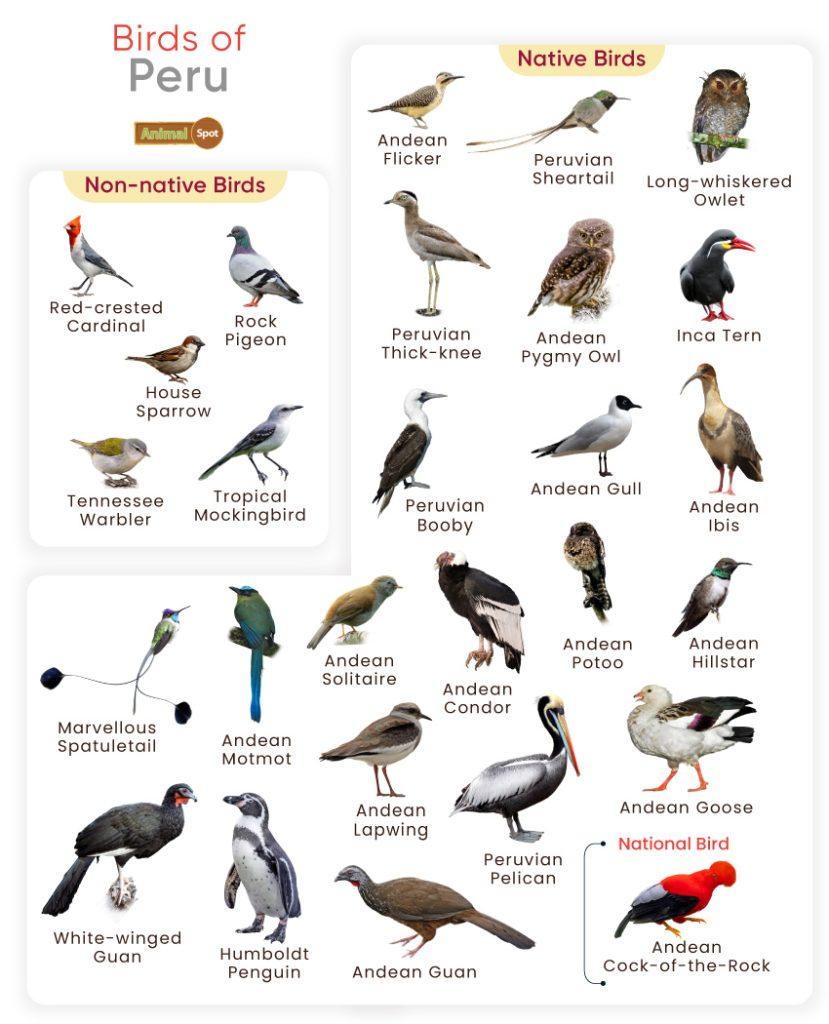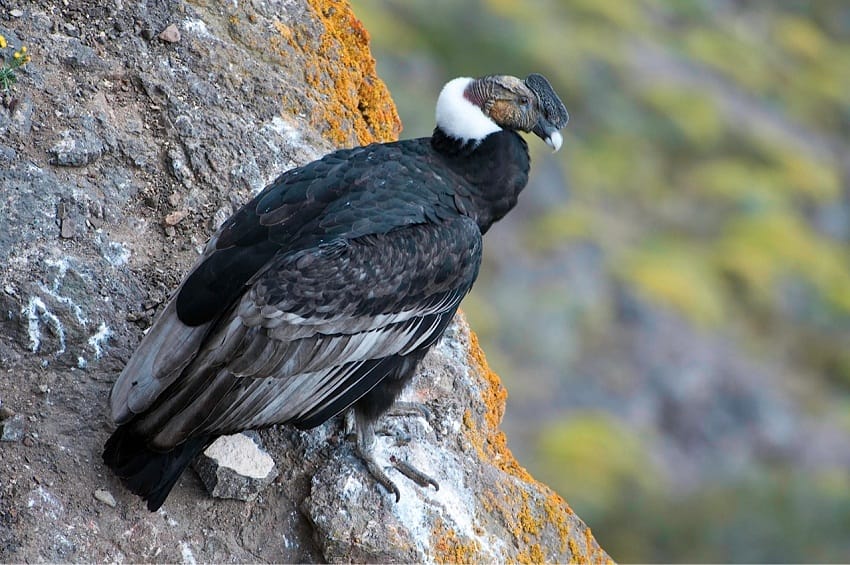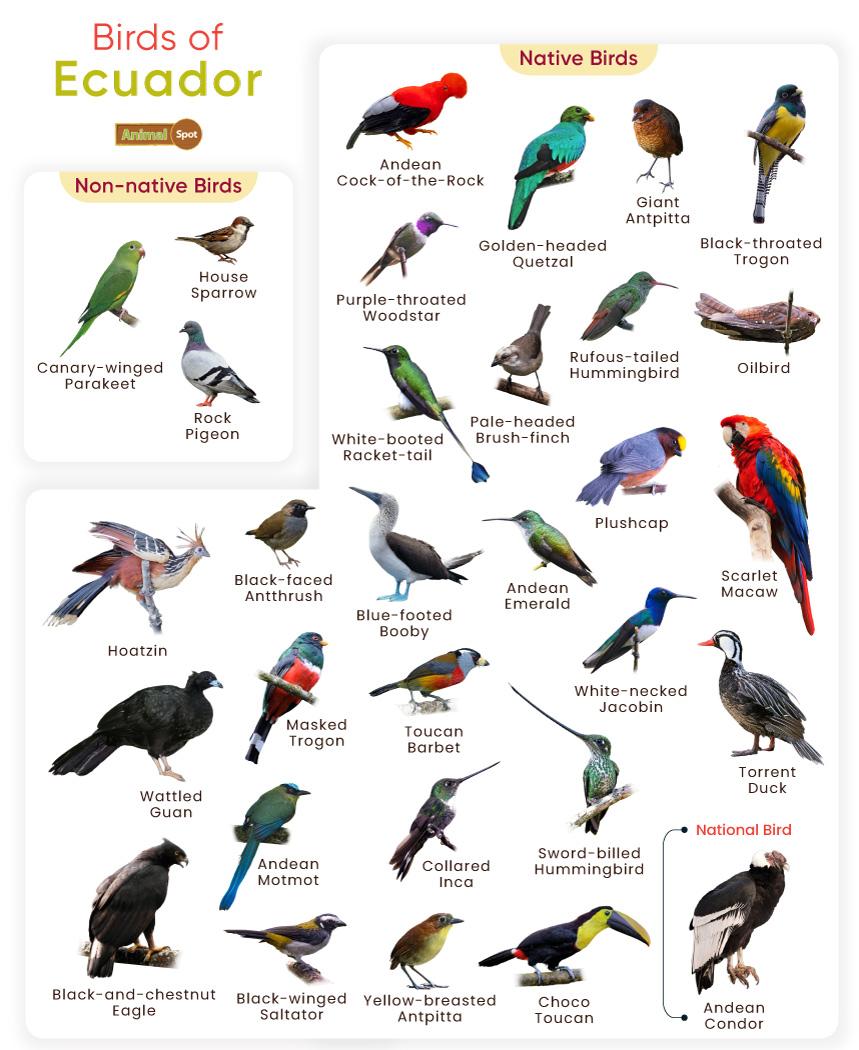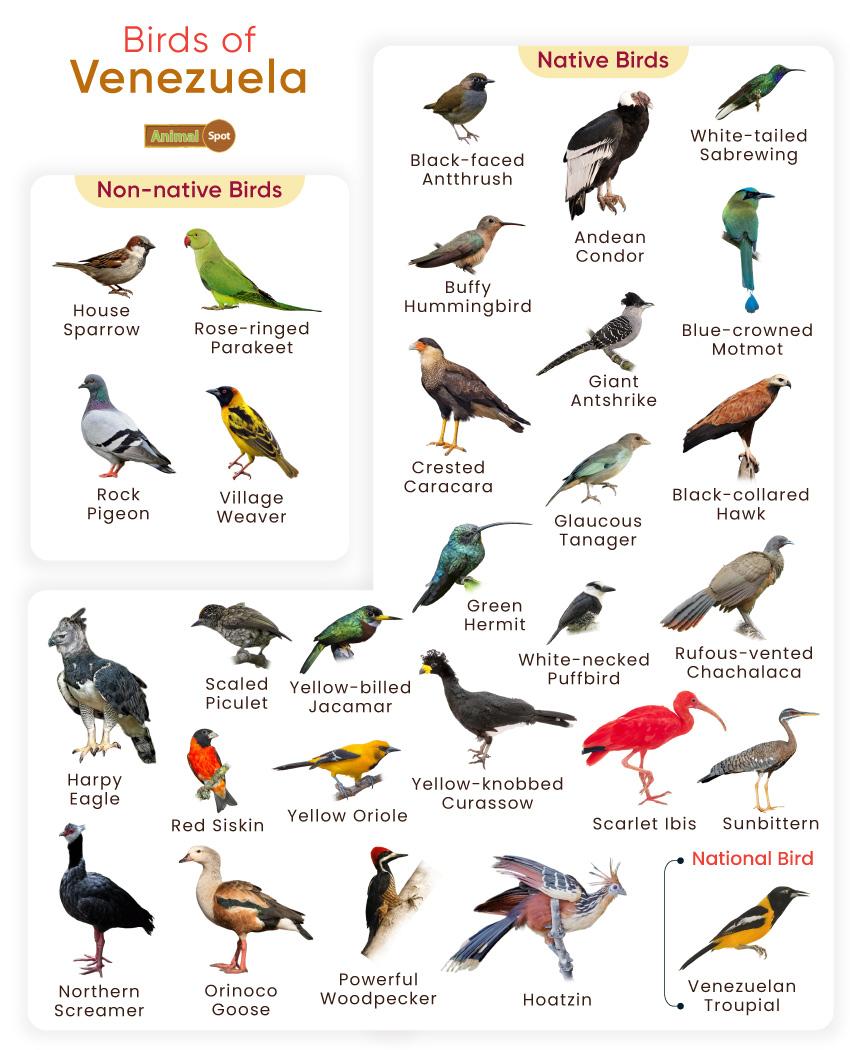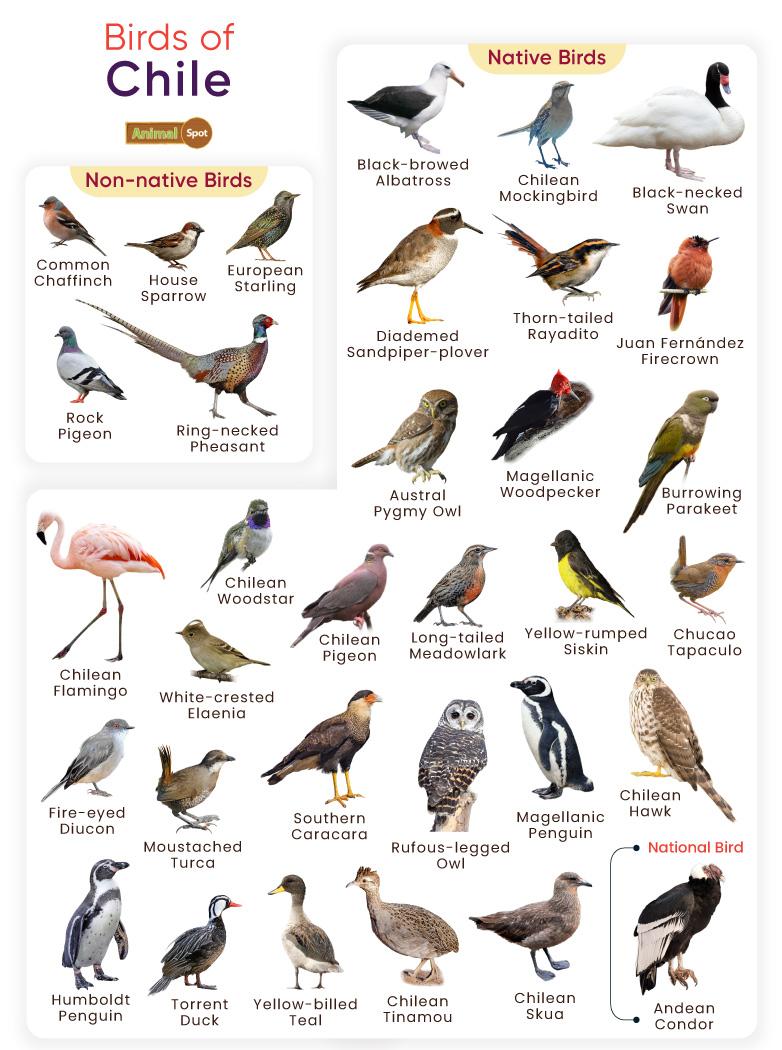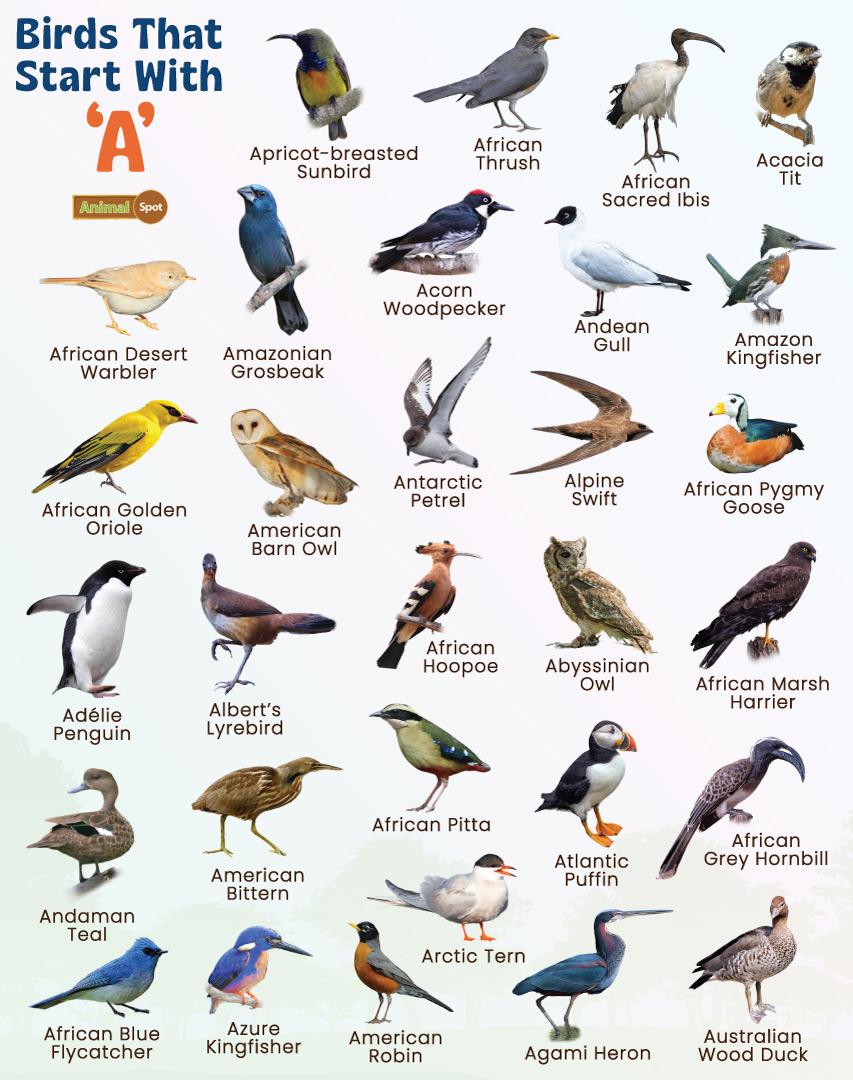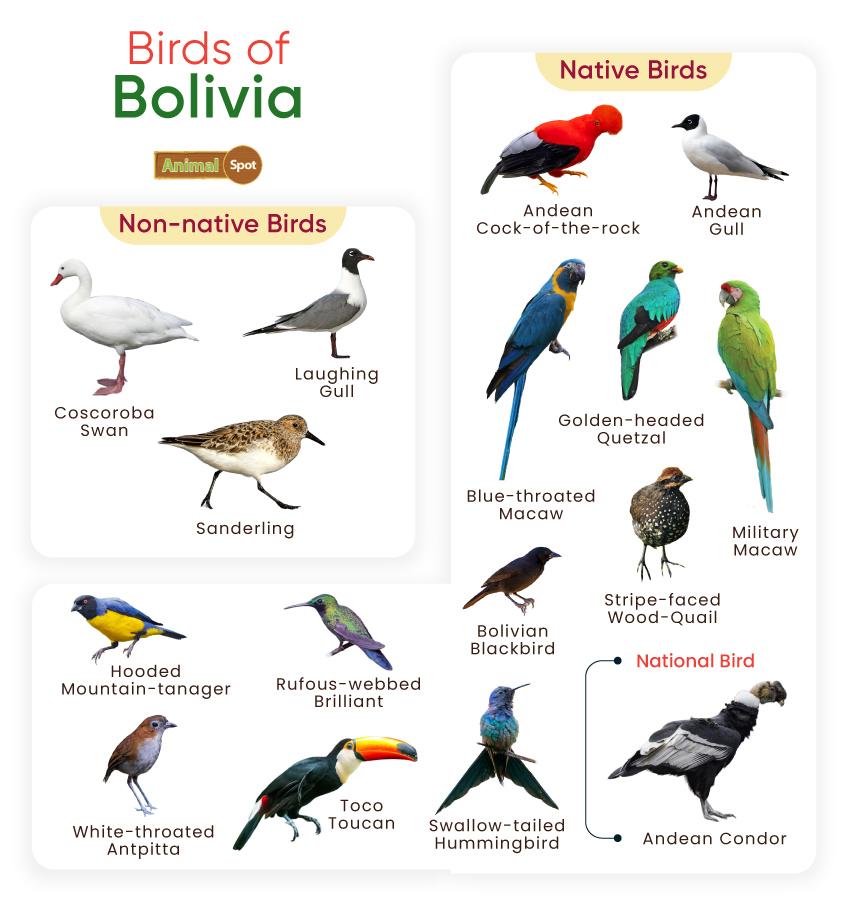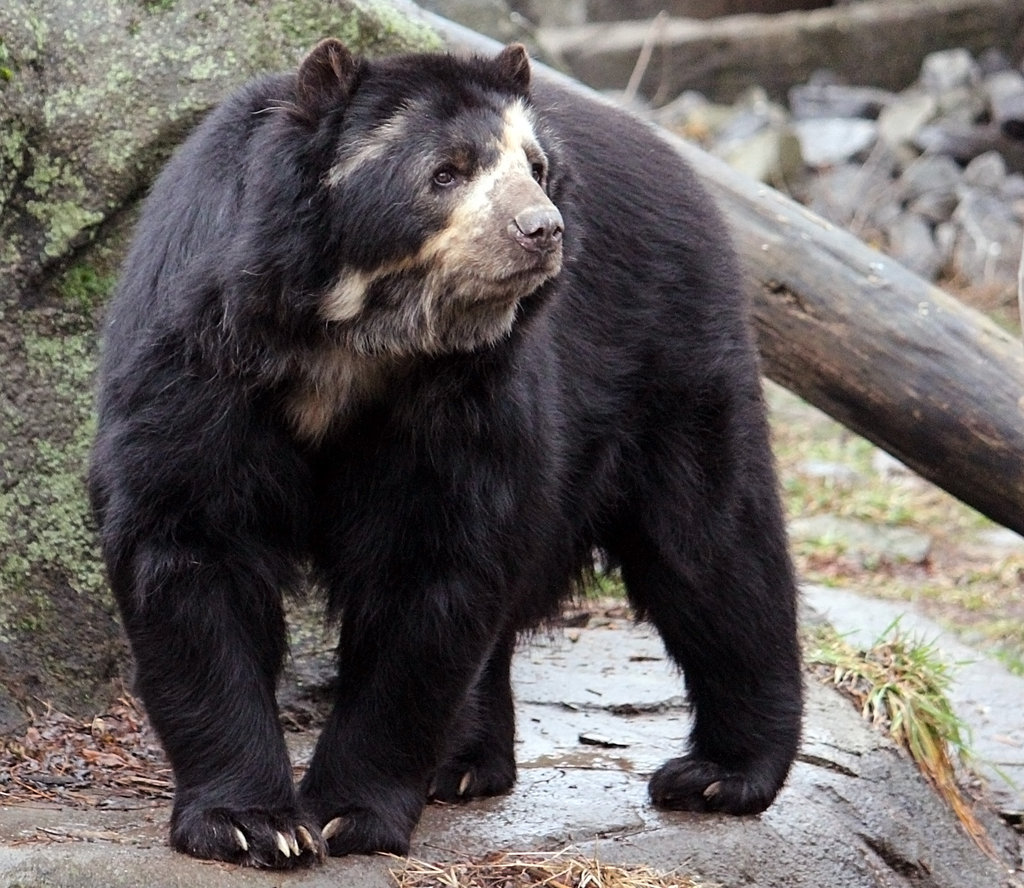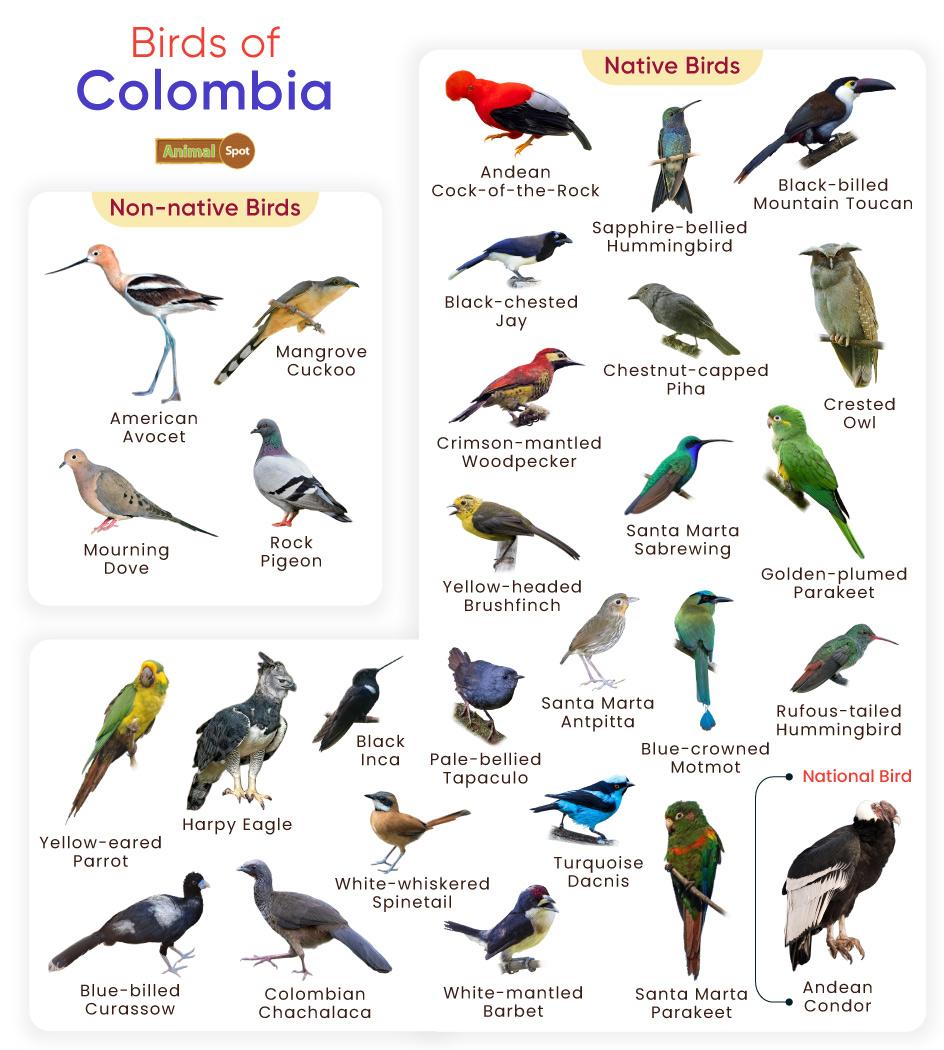Peru is home to over 1800 birds, making it the nation with the second-highest number of avian species. These avifauna live in the country’s diverse habitats, including mountains, coasts, and several types of forests.
The national bird of Peru is the Andean Cock-of-the-rock. Other notable species include the Peruvian Pelican, the Andean Condor, and the Inca Tern.
List of Common Birds Found in Peru
Native Birds
- Amazonian Parrotlet
- Amazon Kingfisher
- American Oystercatcher
- Amethyst-throated Sunangel
- Andean Cock-of-the-rock
- Andean Condor
- Andean Flicker
- Andean Goose
- Andean Guan
- Andean Gull
- Andean Hillstar
- Andean Ibis
- Andean Lapwing
- Andean Motmot
- Andean Parakeet
- Andean Plover
- Andean Potoo
- Andean Pygmy Owl
- Andean Solitaire
- Andean Swallow
- Andean Swift
- Andean Tinamou
- Bananaquit
- Band-tailed Nighthawk
- Bearded Mountaineer
- Black-and-white Tody-tyrant
- Black-backed Tanager
- Black-backed Thornbill
- Black-billed Seed-finch
- Black-capped Tinamou
- Black Caracara
- Black-faced Cotinga
- Black-streaked Puffbird
- Black-tailed Trainbearer
- Black-throated Tody-tyrant
- Blue-and-white Swallow
- Blue-crowned Trogon
- Blue-footed Booby
- Blue-gray Tanager
- Bronze-tailed Comet
- Capped Heron
- Cattle Egret
- Cerulean Warbler
- Chestnut-breasted Coronet
- Chestnut-collared Swift
- Chestnut-crested Cotinga
- Creamy-bellied Thrush
- Crimson-mantled Woodpecker
- Curl-crested Aracari
- Eared Dove
- Golden-collared Honeycreeper
- Golden-collared Toucanet
- Great-billed Seed-Finch
- Great Kiskadee
- Great Potoo
- Great Thrush
- Green-and-gold Tanager
- Green-and-white Hummingbird
- Green-cheeked Parakeet
- Green Jay
- Gray-breasted Mountain-toucan
- Harpy Eagle
- Hoatzin
- Humboldt Penguin
- Inca Tern
- Kelp Gull
- Lineated Foliage-gleaner
- Long-tailed Sylph
- Long-whiskered Owlet
- Maroon-chested Ground-dove
- Marvellous Spatuletail
- Military Macaw
- Monk Parakeet
- Neotropic Cormorant
- Olivaceous Siskin
- Orange-bellied Euphonia
- Orange-breasted Falcon
- Pacific Parrotlet
- Pale-billed Antpitta
- Pale-headed Brush-finch
- Pale-winged Trumpeter
- Peruvian Booby
- Peruvian Pelican
- Peruvian Plantcutter
- Peruvian Sheartail
- Peruvian Thick-knee
- Plumbeous Hawk
- Plumbeous Rail
- Plum-crowned Parrot
- Purple-collared Woodstar
- Rainbow Starfrontlet
- Red-billed Scythebill
- Red-crested Cardinal
- Ruddy Ground Dove
- Rufous-bellied Nighthawk
- Rufous-breasted Hermit
- Rufous-capped Antshrike
- Rufous-capped Thornbill
- Rufous-coll
- Rufous-crested Coquette
- Rufous-necked Foliage-gleaner
- Rufous-vented Whitetip
- Rufous-webbed Brilliant
- Rusty Flowerpiercer
- Rusty-winged Barbtail
- Saffron Finch
- Scaled Metaltail
- Scarlet-banded Barbet
- Scarlet Macaw
- Smooth-billed Ani
- Snowy Egret
- Southern Lapwing
- Spot-winged Parrotlet
- Sword-billed Hummingbird
- Tawny-bellied Hermit
- Tawny-bellied Screech Owl
- Torrent Duck
- Torrent Tyrannulet
- Tropical Kingbird
- Vermillion Flycatcher
- Versicolored Barbet
- Wattled Guan
- Wattled Jacana
- White-bellied Hummingbird
- White-faced Nunbird
- White-throated Hawk
- White-throated Toucan
- White-throated Tyrannulet
- White-winged Guan
- White-winged Shrike-tanager
- Yellow-bellied Tanager
- Yellow-headed Caracara
- Yellow-scarfed Tanager
- Yungas Manakin
Non-native Birds
- House Sparrow
- Palm Warbler
- Red-crested Cardinal
- Rock Pigeon
- Sayaca Tanager
- Tennessee Warbler
- Tropical Mockingbird
- Unicolored Blackbird
Some of the best birding sites in Peru include Manu National Park, Tambopata National Reserve, and the Amazon River and its tributaries. The peak season for birding in Peru varies depending on the region and the type of birds you want to see.
Generally, the best time for birdwatching in Peru is during the dry season, from May to October.

